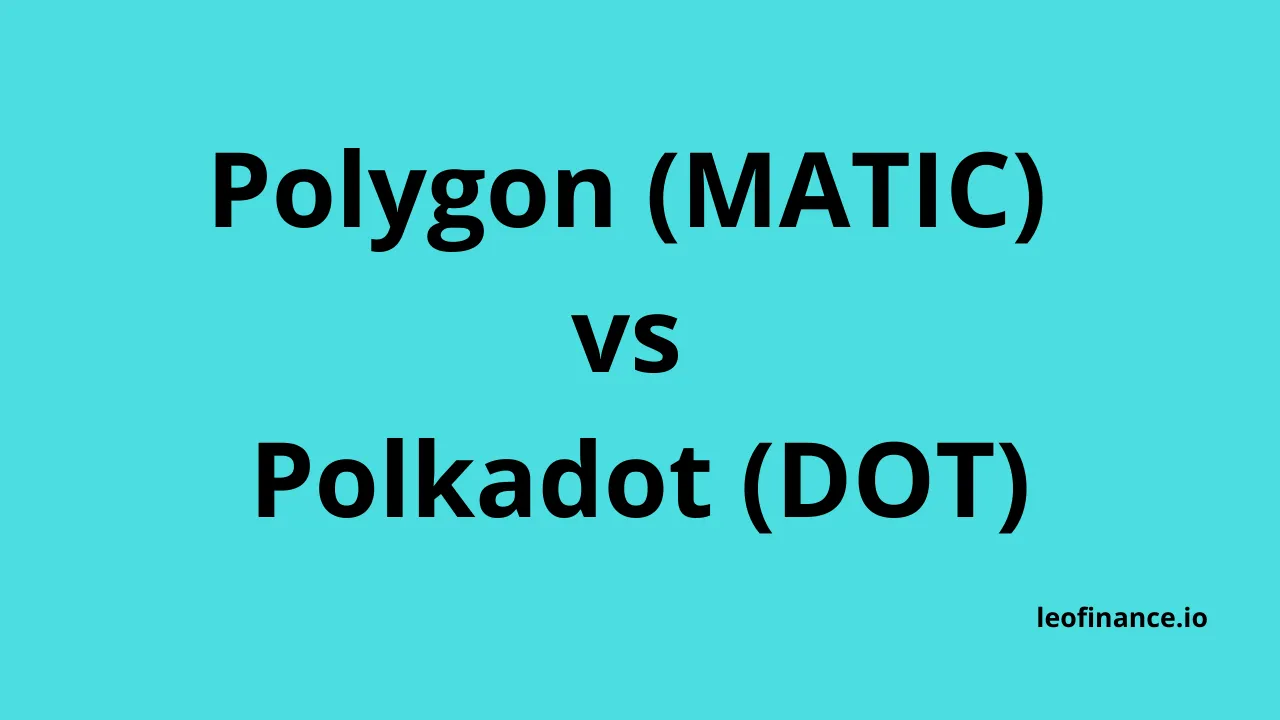This post is part of Polkadot Guide and Polygon Guide. In this section we are going to compare two blockchains - Polkadot (DOT) and Polygon (MATIC).

Introduction
This guide is meant to show you unbiased feature set comparison of blockchains in discussion. Below table shows you the comparison points between the two blockchains.
| Polygon (MATIC) | Polkadot (DOT) |
| Polygon started as a MATIC project which is a layer-2 solution on Ethereum blockchain in Oct. 2017. | Polkadot used to be web3 foundation project before turning into community project in 2020. Polkadot started in 2016 while the Mainnet release was in 26th May 2020. |
| Polygon is a layer 2 solution on the Ethereum blockchain it was designed to scale ethereum using the sidechains. | Polkadot has it's own relay blockchain which has the similar concept like sidechains named parachains which are implemented using community governance vote. |
| Polygon has circulating supply of 6,652,300,637 MATIC coins and total supply of 10,000,000,000 MATIC coins. | As per the Coinmarketcap, Polkadot has a total supply of 1.11 Billion DOT coins and circulating supply of 1 Billion DOT coins. |
| Polygon makes use of the Plasma Framework that deploys Proof of Stake consensus checkpoints for it's transactions. | Polkadot also has it's own nPOS also known as the Nominated Proof of Stake (BABE/GRANDPA) consensus algorithm on it's network. |
| Polygon has support for the smart contract as it's part of the layer2 solution of the Ethereum. | Polkadot's relay chain does not have the smart contract features but the parachains under the relay chain can make use of the smart contracts. |
| Polygon being Ethereum's layer 2 solution has support for NFT, dApps, and the DeFi solutions. | Polkadot too supports the dApps, NFT, digital assets and DeFi on it's relay and the parachains. |
| Polygon makes use of the sidechain framework to implement the interoperability and messaging across it's sidechains. | Polkadot has the parachains to allow relay to parachain or parachain to parachain interoperability and messaging across it's chain. |
| Polygon allows you to use Solidity as a primary language and uses Remix and even web3.js solutions for deploying the smart contracts. | Polkadot makes use of the Rust language along with Substrate framework to deploy it's dApps and the ecosystem solutions on it's blockchain. |
| Polygon does not have community governance so anyone can deploy their solution on their chain which kind of allows attack from rogue projects to take advantage of the Polygon's features. | Polkadot has a community governance and auctions which limits who gets the slots on their relay chain. So there is less risk of any rug-pull or rogue projects affecting the projects. |
| Polygon's expected transactions per second is likely to reach 65,000 transactions per second. | Mainnet testing of the transaction per second for the Polkadot chain has recorded to be more than 1000. |
| Polygon was designed with interoperability in-chain and off chain mind to address some of the financial solutions like DeFi and also speed and performance in mind. | Polkadot was designed with web3 development in mind connecting multiple blockchains and deploying industry specific solutions through parachains or through connectivity cross chains. |
| Polygon has Proof of Stake checkpoints taking care of transaction level security attacks and also uses zkRoll ups in transactions for speed & security. | Polkadot has shared pool security model on it's relay chain. And the most of the rogue attacks on the slot auction are stopped by community voting and governance. |
| Polygon being layer 2 solution it is currently on Ethereum network but may be possible to deploy on other chains too. | Polkadot being a relay chain, it has it's own network but using Parachains and Bridge it can connect with other blockchains for interoperability outside it's chains too. |
| Polygon has varying staking rewards from 5% onwards on most of the crypto exchanges. | Polkadot has the staking rewards from 7% upto 12% on the supported staking pools and marketpalces. |
Polkadot (DOT) or Polygon (MATIC) ?
There is a place for both of these chains in the industry as they happen to address similar concerns on specific places.
Polygon was designed to deploy layer-2 solution that can connect sidechains for interoperability in Ethereum chain. It is meant to address mainnet interoperability on ethereum for DeFi and financial solutions along with any other blockchain solution it can solve while keeping gas fees lower.
Polkadot on the other hands was designed with interoperability, governance, security and decentralization in mind with web3 connectivity in mind. Which addresses solutions in multiple blockchains through bridges and converters for DeFi and other blockchain solutions.
Polygon is chosen when developers want to deploy the solutions on Ethereum blockchain. Polkadot is chosen by developers when they want to deploy solutions that can connect on and off chain. If you are investor your options are based on the price and the use case case scenario that may vary for each user.
Conclusion
Polygon continues to solve some of the on-chain interoperability, messaging and the decentralization issues on Ethereum chain. Think of Polygon as a Polkadot for Ethereum. Meanwhile Polkadot does it's own thing with it's performance, decentralization, interoperability, security and strong governance on & off it's chain through bridges.
